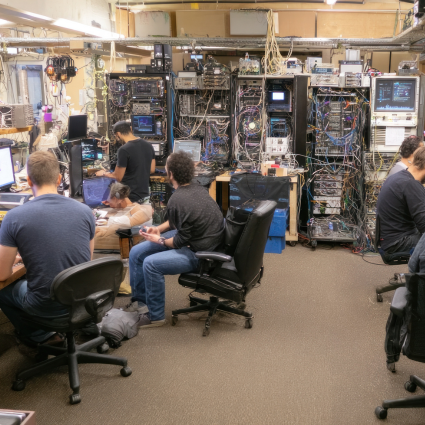Here’s Why It’s Indispensable for Multi-Site Networks
For any enterprise managing a Wide Area Network (WAN) with multiple locations, distributed network monitoring isn’t just a luxury—it’s an absolute necessity. You might be wondering, “How many sites justify this kind of investment?” From what I’ve observed, if you’re wrangling five or more network locations, you’re likely spending a significant chunk of your day wrestling with network and application issues.
If that sounds familiar, it’s a clear signal. You need the power of distributed network monitoring solutions to streamline your operations and reclaim valuable time. It’s truly a game-changer for quickly identifying legitimate network and application problems, and crucially, for efficient fault isolation, which is a critical step in any robust network troubleshooting process.
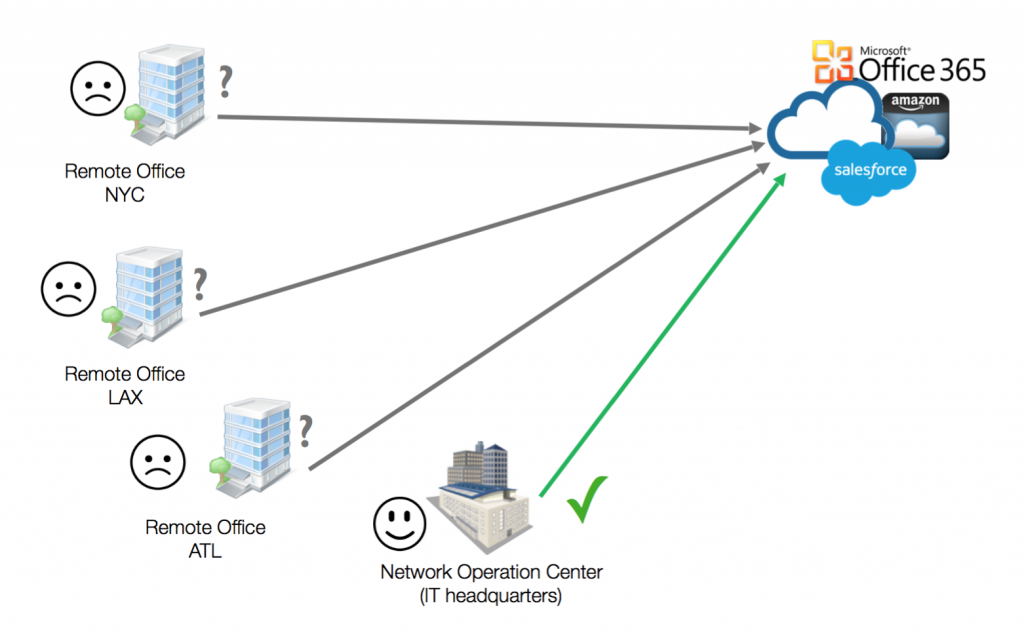
The Limitations of Centralized Network Monitoring
Traditional, centralized network monitoring often falls short in complex, multi-site environments. It can provide a tunnel-vision view, making it hard to pinpoint the root cause of issues affecting only specific locations. This is precisely where distributed network monitoring architecture shines.
Distributed Network Monitoring: A Clear Definition
So, what exactly is distributed network monitoring? It’s a strategic approach that leverages data from multiple observation points, often called agents or sensors. These agents provide insights into a specific monitored object or target. The goal is simple: to determine the true status of that target, unclouded by localized conditions that might skew a single agent’s measurement.
Thanks to this intelligent network monitoring strategy, you can quickly verify whether users can access a particular application. And here’s the kicker: you can immediately ascertain if the problem is network-related or an application glitch. It’s surprisingly straightforward. Simply check the percentage of agents reporting the application as down. If some agents can connect but others can’t, the network is likely the culprit. However, if all your agents are flagging the application as down, it’s time to dial up the application’s tech support. This clear distinction is a core benefit of distributed network performance monitoring.
Real-World Distributed Network Monitoring Use Cases with NetBeez
Let’s dive into a few simple NetBeez use cases to illustrate the practical advantages of distributed network monitoring tools. In NetBeez, our agents are affectionately known as “beez,” and they come in various forms: wired, wireless, and software/virtual.
Scenario 1: All Systems Go – No Problems Detected
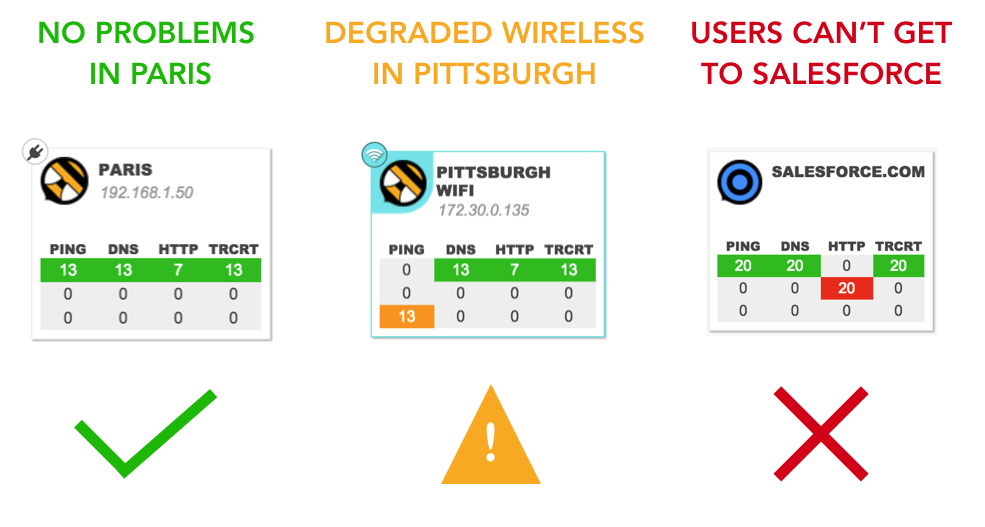
On the left side of the image above, you’ll see a wired beez stationed in our Paris office, happily reporting no issues. This is the ideal state—your network humming along, no applications down. You can effortlessly confirm this because all thirteen ping, thirteen DNS, seven HTTP, and thirteen traceroute (TRCRT) tests are glowing green, indicating everything is running perfectly. These test counters represent the real-time tests the agent is conducting on specific targets defined by your network administrator, whether they’re internal applications or cloud-based services. This visual confirmation is a hallmark of effective multi-site network monitoring.
Scenario 2: Identifying Performance Bottlenecks

In the center of the image, we have a wireless beez deployed in our Pittsburgh office. Here, the beez is flagging performance degradation on the wireless network. You can easily spot this because all thirteen ping tests are yellow, signifying performance issues. This rapid identification is a key advantage of WAN performance monitoring through distributed agents.
If I drill down into this particular problem, I can select one of these ping tests and review the alerts triggered by that specific test running on the wireless agent:

As you can observe, this ping test, along with the other twelve, is exhibiting very high packet loss. This is a strong indicator of a network issue. But how can I definitively say this is a wireless problem and not an issue on the local LAN or the WAN link itself?
This is where the true power of distributed network monitoring shines. I can cross-reference the status of these same tests with those run by a wired beez at the same location, connected to the network via an Ethernet interface only:
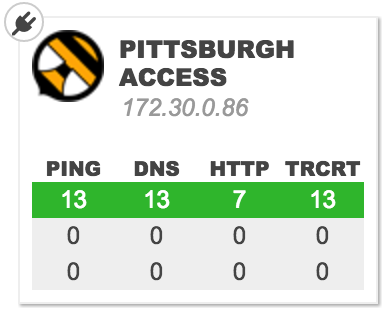
If you then inspect one of the thirteen ping tests running on that wired beez, you’ll see no packet loss detected. Check out the real-time graph below:
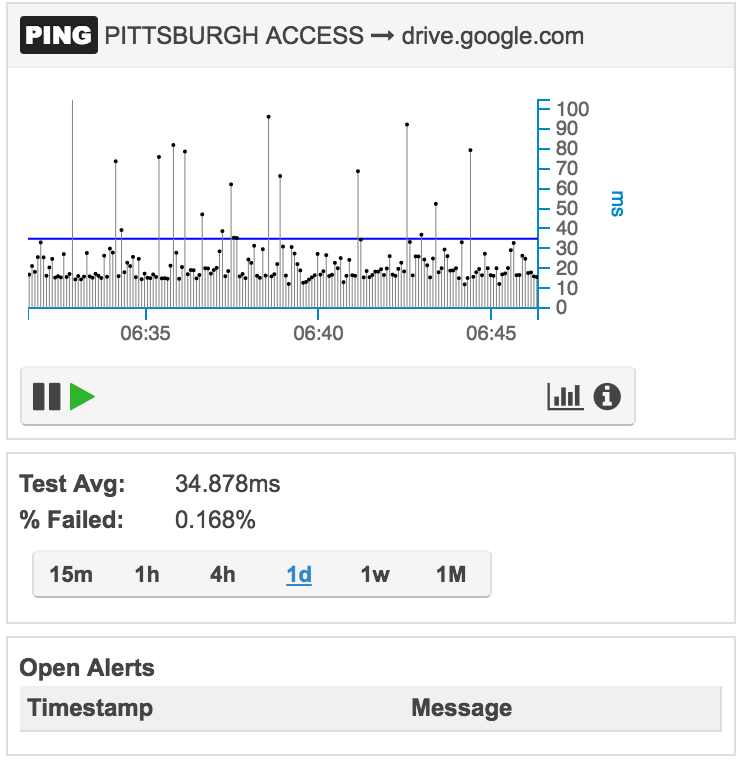
This side-by-side comparison, thanks to our distributed agents, immediately tells us the problem is specific to the wireless segment, not the broader network infrastructure. This level of granular insight is invaluable for network troubleshooting in distributed environments.
Scenario 3: Application Outage Confirmation
Let’s look at a case involving the network monitoring target, salesforce.com:
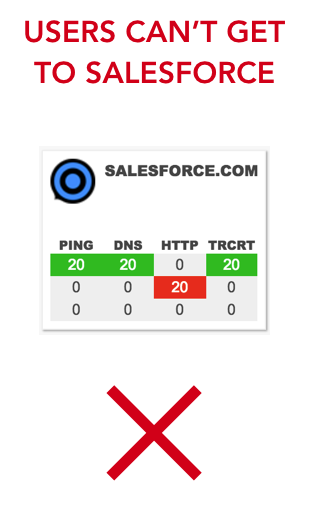
Here, we’re examining a Target, which, in NetBeez, is a monitored object grouping all the tests performed by various beez deployed across different network locations. In this instance, we’re monitoring Salesforce with ping, DNS, HTTP, and traceroute tests. As you can see, the ping and DNS tests are green, confirming network connectivity from the beez to salesforce.com. However, all twenty agents are reporting failed HTTP tests.
Having all your beez consistently confirming the same condition is undeniable proof. This immediately provides a clear follow-up action for your tech support team: open a ticket with Salesforce. It also gives the network administrator a significant advantage when dealing with support tickets that might hit the help desk, empowering them with concrete evidence. This demonstrates the critical role of distributed network monitoring software in validating application availability.
Conclusion: Embracing Distributed Network Monitoring for Your Enterprise
I sincerely hope this blog post has been a valuable introduction to the concept of distributed network monitoring. I’d love to hear your thoughts in the comments section below! Do you currently have a distributed network monitoring system implemented in your network? If so, what benefits has it provided? And if you’re eager to delve deeper into this topic in a private session, please don’t hesitate to request a demo. We’re here to help you conquer the complexities of your multi-site network with robust distributed network monitoring solutions.




